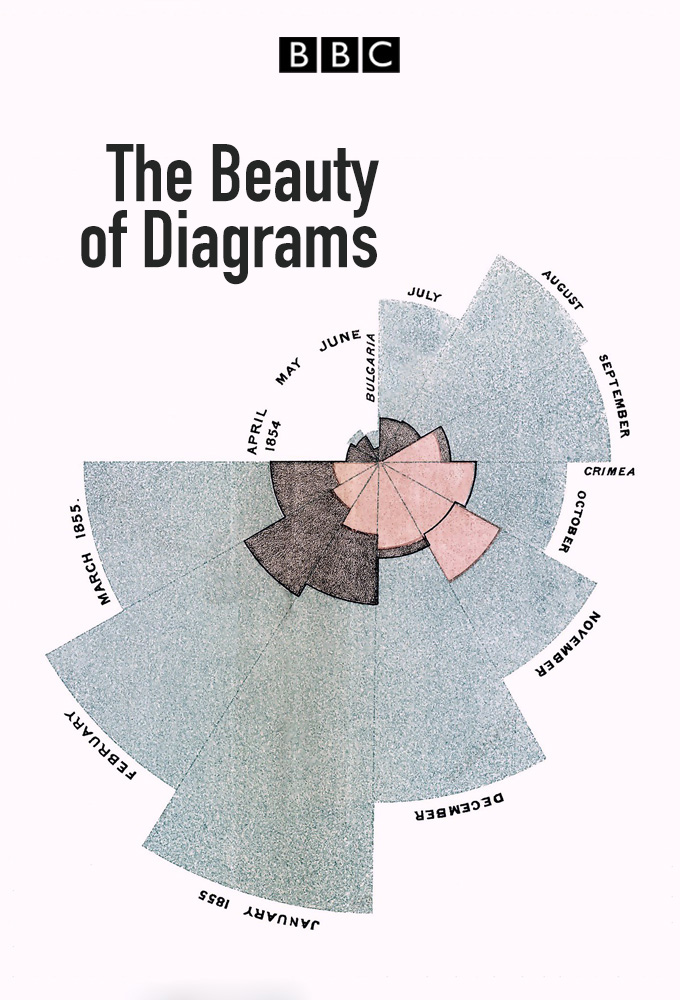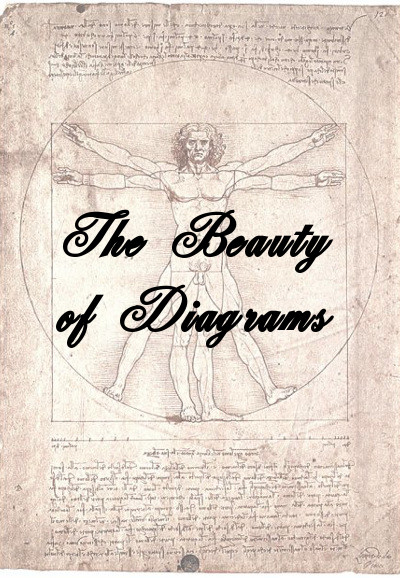
The Beauty of Diagrams
3/5
Année : 2010
Nombre de saisons : 1
Durée moyenne d'un épisode : 30 minutes
Genre(s) : Documentaire
Mathematician Marcus du Sautoy looks at six famous scientific diagrams, from the Vitruvian Man to the double helix and the Pioneer plaques. Investigating their historical context, layers of meaning and artistic beauty.
Saisons

Saison 1
4/5
Épisodes
Choisissez votre saison au dessus et découvrez les épisodes qui vous attendent !
Épisode 1 - Vitruvian Man
18 novembre 2010 - 5/5
He looks at Leonardo da Vinci's world-famous diagram of the perfect human body, which has many layers from anatomy to architecture, and defines our species like no other drawing before or since. The Vitruvian Man, drawn in the 1480s when he was living and working in Milan, has become one of the most famous images in the world. Leonardo's drawings form a vast body of work, covering every imaginable subject in spectacular detail: from feet, skulls and hands to muscles and sinews; from hearts and lungs to buildings, bridges and flying machines. Vitruvian Man perfectly synthesises Leonardo's passions for anatomy, for the mechanics of the human body and for geometry. It is also full of surprises, illustrating an ancient architectural riddle set out 1,500 years earlier by the classical writer Vitruvius about the relative proportions of buildings and men; a riddle that, even today, still fascinates and beguiles experts and viewers alike.
Épisode 2 - Copernicus
25 novembre 2010 - 4/5
When Polish priest and astronomer Nicolaus Copernicus developed his extraordinary theory of a sun-centred universe 500 years ago, he was flying in the face of both science and religion. Mankind had believed for thousands of years that the earth was at the centre of the cosmos, and to disagree was to risk derision and accusations of heresy. For decades he was too afraid to publish, but the arrival of a young German scientist gave Copernicus courage, and his book and its extraordinary diagram were published in 1543, when he was on his deathbed. His image of the heliocentric universe changed forever our understanding of the Cosmos, and of our place in it.
Épisode 3 - Newton's Prism
2 décembre 2010 - 3/5
In the mid-1660s, Isaac Newton bought a pair of prisms at a fair near Cambridge, which were to be the basis of a series of experiments that would unlock a secret that had occupied scientists for centuries - the nature of light itself. To explain what he had done, Newton created a diagram. It is called The Crucial Experiment and is a pivotal image in scientific history, a graphic moment when the ancient world was overturned by modern science. Newton demonstrated that white light is not pure, but made up of a number of different colours, the colours of the rainbow. Newton's ideas transformed our knowledge of what we see and how we see, and the prism and its refracted colours became a captivating image. From fibre-optics to the cover of Pink Floyd's Dark Side of the Moon album, Newton's work went on to influence centuries of science and art.
Épisode 4 - Florence Nightingale
9 décembre 2010 - 3/5
A look at Florence Nightingale's use of statistical graphics as a call to action following her experience of caring for soldiers during the Crimean War of 1854-1856. She compiled her findings into a report featuring the Rose Diagram, which explained how 16,000 of the conflict's 18,000 deaths were a result of infectious diseases found in hospitals, and was used to persuade the British government to improve sanitation.
Épisode 5 - DNA
16 décembre 2010 - 4/5
In the last hundred years, one diagrammatic image stands above all others. It represents a scientific breakthrough that has been voted the most significant in the 20th century, more important than penicillin or the first working computer. The double helix shows us what the structure of our DNA looks like. Francis Crick and James Watson announced their discovery in Nature magazine in April 1953, and their article included a diagram of the structure by Odile Crick. The image she drew has become so well known and loved that we now find it in a whole range of consumer products - there are double helix ties, dogs chews and even a perfume. So has the image of the double helix become so divorced from its original scientific setting that no one knows what it really is or what it stands for?
Épisode 6 - Pioneer Plaque
23 décembre 2010 - 4/5
A look at the Pioneer Plaque, which was installed on the unmanned space probe Pioneer 10 to communicate facts about Earth and its inhabitants to potential life on other planets after its launch from Cape Canaveral in March 1972. The panel was engraved with graphic images and mathematical symbols, showing the location of its origin in the solar system and controversial naked figures of human beings.
Vidéos
Oups aucune vidéo pour le moment... Revenez plus tard pour des aventures en images !

Aucun avis pour le momment...